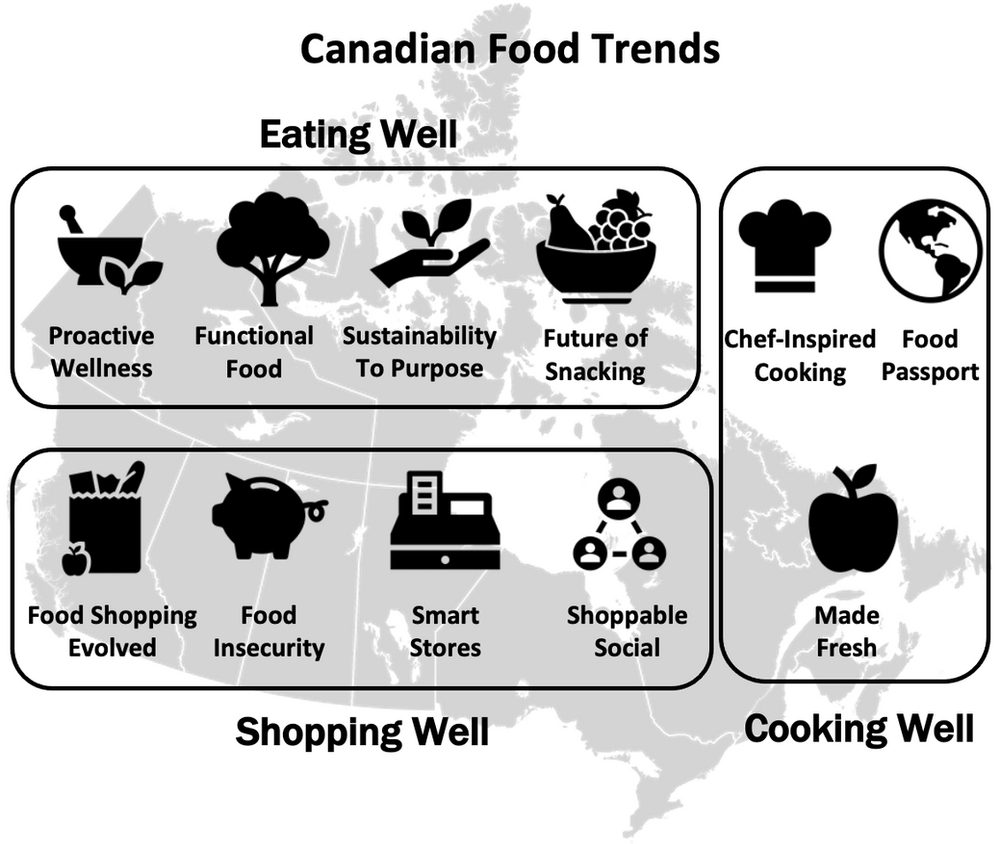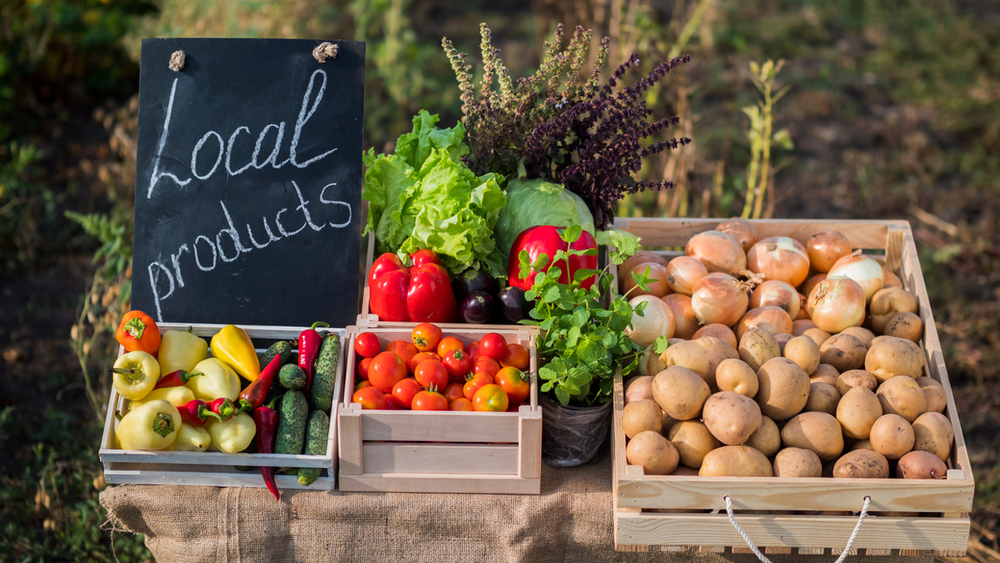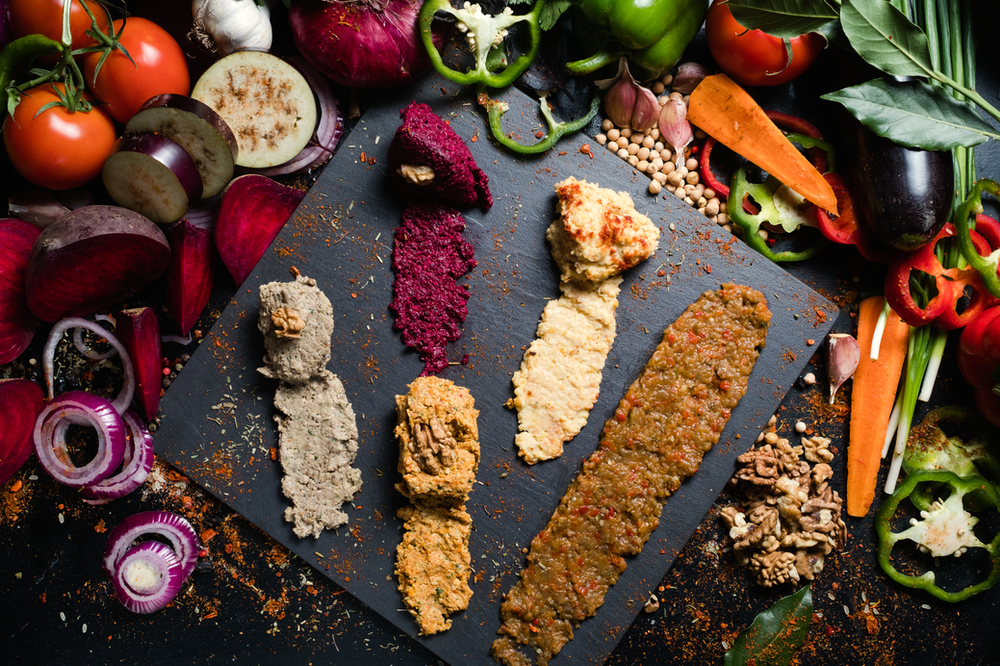By Katherine Barks, The Mars Agency
A growing global practice gives The Mars Agency insights into shopper behavior and the business of commerce across a wide range of countries. Here, the agency’s Toronto-based Retail Solutions team looks at recent consumer trends that are having a significant impact on the Canadian grocery channel.

In a series of three articles, we’ll provide a brief overview of each trend, along with one actionable idea for brands to consider. Article 1 covered Eating Well trends. Part two covers Cooking Well.
PART 2: COOKING WELL
1. Made Fresh

A key enabler of the wellness trend, fresh foods are the primary growth driver for retail grocers, accounting for 49% of incremental dollar sales growth in the fast-moving consumer goods industry, according to Deloitte. Shoppers have started to increase their trip frequency to ensure that fresh produce is available for their weekly needs.
Another key consideration: With supply chain challenges having become so widespread during the pandemic, consumers and retailers alike are looking for locally sourced solutions.
Shoppers believe locally sourced is better for them.
Almost one-third (32%) of Canadian households consuming plant-based products are driven by health consciousness, while 23% say they’re hoping to contribute to environmental sustainability, according to Dalhousie University’s Agri-Food Analytics Lab.
Due to concerns around supply chain limitations, carbon footprint impact and wellness needs, more shoppers are seeking transparency into product sourcing so they can make the best decisions both for their own health and for the wellness of the community and the climate.
As a result, Canadian grocers (like their counterparts in the U.S.) are focusing a lot of promotional activity on “Locally Sourced” fresh products to drive trips and loyalty.

In one example, Sobeys is expanding its partnership with vertical farming start-up InFarm to include growth, production and distribution hubs in four major cities. Growing centers will be built in Calgary, Halifax, Winnipeg, and Hamilton by 2023 that will supply more than 1,000 stores in the Sobeys network.
These InFarm units enable Sobeys to offer fresh produce that is grown without chemical pesticides. What’s more, InFarm says its hydroponically grown produce requires 95% less water, 90% less transportation, and 75% less fertilizer than industrial agriculture methods.
In addition, modular farming units at select Sobeys’ stores provide an even more local ecosystem that creates an ideal environment for fresh greens and herbs.
ACTIONABLE IDEA:
Create complementary meal solutions by pairing your products with fresh foods, ideally with a regional or local focus.
_______________________________________________________________
2. Chef-Inspired Cooking

“Consumers have developed new competencies and a new confidence in doing things for themselves; they’ll carry these skills with them as we move past the pandemic,” according to Dr. Sarah Reid, Head of Deloitte-owned consultancy Doblin Canada.
Canadians everywhere have discovered — or re-discovered — the joys of preparing home-cooked meals from scratch. And that trend is bringing households together to share mealtimes and even find new menu ideas together. According to Deloitte:
- 72% of consumers aged 35-54 are cooking more meals at home.
- 62% of consumers overall prepare dinner from scratch 4 to 6 times per week.
- 48% get meal suggestions from the family.
- 47% search online for inspiration.
- 38% ask friends for ideas.

Naturally, this resurgence in home cooking is changing what Canadians are buying from the grocery store (see “Functional Food” in Part 1).
At the same time, however, 25% of consumers have been ordering takeout food from restaurants more often during the pandemic, and 71% expect to continue doing so at a higher rate. So maintaining share of food spend has become even more challenging, according to the Retail Council of Canada.
ACTIONABLE IDEA:
Develop a livestream “cook with us” event series.
______________________________________________________________
3. Food Passport

COVID-driven restrictions in travel and out-of-home activity have led consumers to “visit the world” through their tastebuds. In addition the health-focused behavior already discussed, Canadian consumers are also craving novelty, over-the-top indulgence in 2022.
Almost three in four (74%) consumers want to experience new and original flavors, according to Whole Foods Market. International flavors, both strong and subtle, are in the spotlight for 2022, including spicy-sweet, curcuma, hibiscus and yuzu.
Part of the exploration involves consumers leaning into their cultures to experience authentic family recipes. Ancestral eats are expected to spike in 2022, as Canadians draw from their diverse backgrounds — among the more trendy being Greek, Lebanese, Chinese, and Scottish.
ACTIONABLE IDEA:
Partner with social creators who can showcase your products while sharing their authentic family recipes.

COMING SOON
Part 3: Shopping Well

About the Author
Katherine Barks is VP-Strategy within the Retail Solutions team at The Mars Agency. She is a business strategist with 25+ years of diverse experience across the many facets of strategy, including consumer/ shopper behavior research, channel and category insight, retail strategy, customer experience design, and measurement best practice. A highly regarded marketer in North America, she has worked with many tier-one CPG clients such as Kimberly-Clark, S.C. Johnson, Unilever, Diageo, Heineken, Pfizer, Pepsi, Campbell Soup Company and General Mills.
In her current role, Katherine is focused on supporting retail strategists and retailer clients including Walmart Canada, Big Y and Hudson’s Bay.